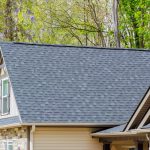Radiators add charm and character to a room but these often ancient systems require a lot of maintenance to keep them in tip-top shape.
In Canadian homes you are most likely to find two types of hot water heating systems: hot air (forced air) or hot water heating systems (hydronic).
The vast majority of homes built since the 1950’s now feature forced-air systems which use gas, oil, or a propane furnace. They work by distributing heated air throughout the home via the ductwork.
Prior to the 50’s, many homes were built with hot water or hydronic heating systems, which typically use a boiler to supply hot water to cast iron radiators.
How Hot Water Rads Work
Hot water radiator systems circulate water that is heated in the boiler to your radiators and back. Heated water enters and rises through the system by convection, while cooler water in the radiators falls back to the boiler.
In older pipe systems, hot water flowed from room to room and then back again to the boiler through the same pipe, which is why the last room of the circuit never gets as warm as the first. Newer units are more efficient and feature two pipes – heated water flows through one pipe, and the cooler water returns through another.
Ultimately, where there is no flow of hot water, there is no heat, and if you do regular maintenance checks of your system, you’re looking at one chilly winter.
Bleeding
When hot water radiators aren’t keeping your house as hot as you’d like, or alternatively, if the top section of the rad stays cooler than the bottom, it might need to be bled.
Cold water holds more air than hot, and when water is heated that air comes out of the solution and rises to the top, becoming trapped in the twists and turns of your radiator and blocking the flow of water. “Bleeding” is the process of opening an air vent to allow the trapped air to escape.
If you haven’t already, turn down your thermostat to stop the flow of water. Locate the air vent near the top of the unit and keep a small bucket and rag handy to catch any squirts. Open the vent. You may hear a rush of air or whistle as the trapped air escapes. Once the air stops sputtering and water starts to come out you can close the valve.
Flush
Over time, radiator pipes can become clogged by mineral deposits and sludge can build up and impede the flow of water. In this instance, your best course of action is to drain the boiler and flush the pipes to get rid of the blockage.
Though it’s possible to flush your radiator yourself – a pretty solid activity that might take all weekend – this is a pretty messy and involved procedure. It’s highly advised you bring in a professional who has the right tools and the know-how needed to get the job done right.





